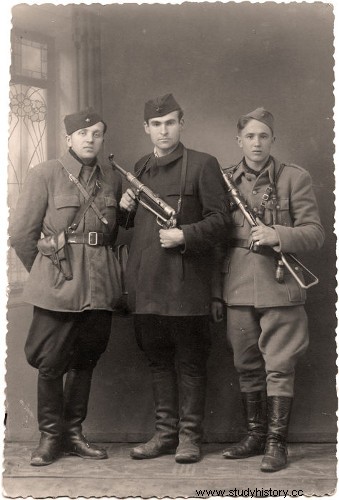
The World War II it was the biggest conflict in the history of mankind and spread across almost all of Europe. In the case of Yugoslavia , the war began in 1941, when Nazi troops invaded the country and created a puppet state controlled by Croatians. From then on, the internal groups began to fight among themselves for control of the region while resisting the Nazi presence.
Nazi invasion and the Croatia of the Ustase
The Yugoslavia , since 1929, it was a dictatorial monarchy commanded by Serbs and controlled all other ethnic groups in the region through strong repression. When World War II began, the Kingdom of Yugoslavia was ruled by Prince Paul. The conflict in that country began with the Nazi invasion carried out in April 1941.
The Nazis coerced Prince Paul into joining the Axis in March 1941. As Yugoslavia was unable to reject the Nazi ultimatum, he accepted and joined the Axis. The Axis was an alliance formed through the Tripartite Pact in 1940 and consisted of Germany, Italy and Japan. Over the course of the war, other nations joined the Axis, such as Hungary and Romania.
The alliance with Yugoslavia manifested the German interests in guaranteeing the passage of its troops through the country, which would be sent to help the Italians in difficulty in the invasion of Greece. In addition, this alliance would also guarantee Germany important resources for the maintenance of the war.
The union with the Axis caused Serbian nationalists to depose Prince Paul from power, which led to the Nazi invasion on April 6, 1941. This invasion generated a total rearrangement of the power structure in the region. First, Germany carried out the territorial division of part of Yugoslavia and provided Yugoslav territories to Italy, Bulgaria and Hungary. Part was occupied by Germany, and another considerable part was used for the creation of the Independent State of Croatia .
This Puppet State created by the Nazis provided the territories that correspond to present-day Croatia and Bosnia and Herzegovina to a far-right Croatian party called Ustase . The Croatian state was considered a puppet because, despite its apparent independence, Croatians were forced to accept the presence of Nazi troops in the region. In addition, many Croatian internal affairs were subject to German interference, such as the appointment of local officials.
Croatia is now ruled by Ante Pavelic . Croatian policy in its newly created state was to promote ethnic cleansing in the country against populations of Serbian origin. It is estimated that in 1941 there were around 2.2 million Serbs in the Croatian state. The Ustaše's intention was to kill a third of the Serb population, deport a third and forcibly convert the rest to Catholicism (Serbs were Orthodox Christians). For this, the Croatians created the Jasenovac concentration camp , which was responsible for the extermination of about 100 thousand people.
Resistance and Civil War
The Nazi presence and the terror imposed by the Ustaše caused the formation of militias against the main forces. In the Yugoslav resistance, the following stood out:
-
Chetniks :Serbian monarchists and nationalists fighting for the formation of Greater Serbia. They were led by Draža Mihailovic;
-
Partisans :Yugoslavs of different nationalities and communist orientation who fought against Nazism and against Ustaše fascism. They were led by Josip Broz Tito .
Despite the formation of this resistance against the Nazis, the war in Yugoslavia was mainly an internal dispute between the three groups for control of the region. This became evident when the partisans and chetniks negotiated peace with the Nazis at one point to concentrate on fighting their internal adversaries.
A hallmark of this war scenario, as well as many others in World War II, was the violence of the fighting. Massacres against civilians carried out by all the belligerent groups were sometimes recorded, as reported by Max Hastings:“All the villages in the Sutjeska valley [Serbia] were destroyed. First the Ustaše burned the Orthodox villages, and then the Chetniks burned the Muslim villages.”|1|
After the four years of conflict in Yugoslavia, the partisans prevailed, and the balance was about 1.2 million people killed. The partisans relied on British and Soviet support, which is why they were able to defeat so many chetniks like the Croats and the Nazis. The leadership of Yugoslavia ruled by the partisans was given to Josip Broz Tito . Tito established socialism and controlled Yugoslavia in a dictatorial manner throughout his life. He was quite successful in controlling ethnic rivalries in the region.
|1| HASTINGS, Max. The world at war 1939-1945. Rio de Janeiro:Intrinsic, 2012, p. 487.
Take the opportunity to check out our video lesson related to the subject:
